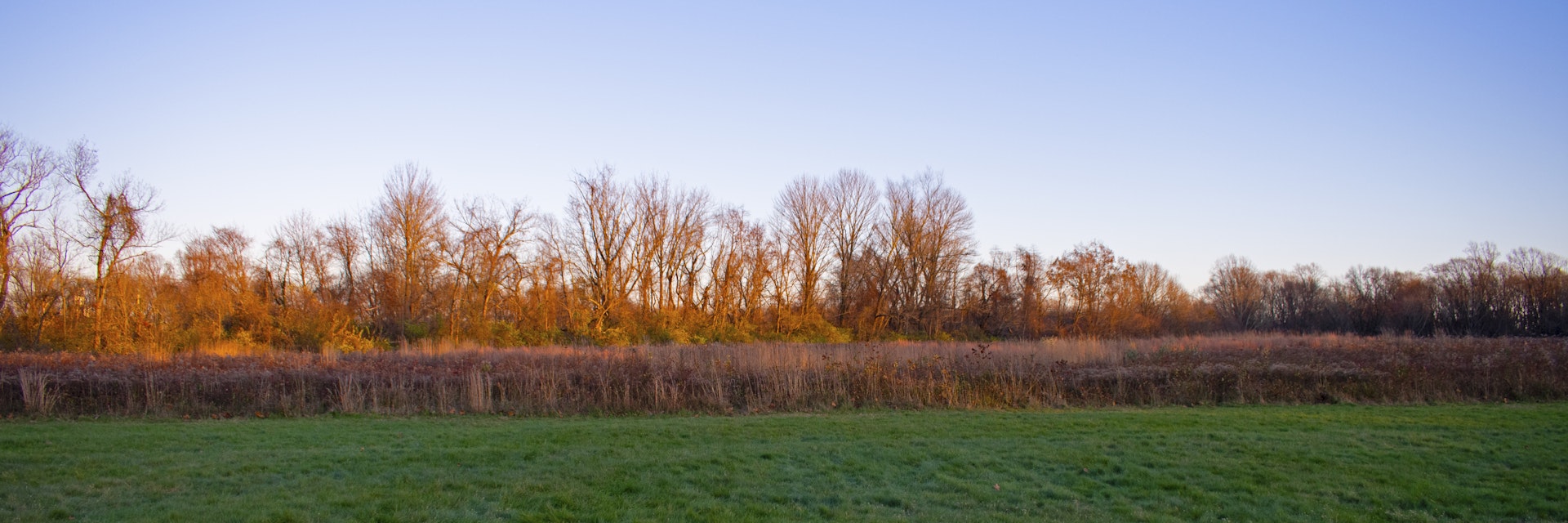With about in New Jersey, there’s no shortage of wooded pathways to explore.ĚýBut some just happenĚýto beĚýin wonderfully unexpected places, like Mercer County’s , next door to Princeton University.
On 589 acres of land owned by the Ěý-Ěýwhich allows year-round publicĚýaccess - there are ideal for walking, running, biking, and cross-country skiing.Ěý
While some of the paths are wider and more trodden than others, the area is generally flat, making it easy to focus on the surrounding nature, with , including beech, hickory, pine, sweet gum, maple, dogwood, oak and tulip.
Add to that a brook along its southwestern edge and the surrounding floodplains with wildflowers, and it’s no surprise Institute Woods’ diverse topography and flora draws in a variety of fauna.
© Shutterstock / EQRoy
±áľ±˛őłŮ´Ç°ů˛âĚý
The Institute for Advanced Study, which is not associated with its Ivy League neighbor, is a postdoctoral research campus founded in 1930 by Louis Bamberger and Caroline Bamberger Fuld, with .Ěý
Conceived as a “,” the surrounding lands were acquired between 1936 and 1945, and the institute became the steward for the preservation of the woods in 1997 as part of an easement with the state’s to develop and enhance interconnected open spaces.Ěý
Things to do
A haven for birdwatchers every season, the woods provide a spring and fall migrating stop as well as a summer breeding habitat for winged creatures; more than have been spotted here. Migrating songbirds, especially warblers (up to 30 different warblers have been seen in a single day), are known to make appearances, with being the most popular periods for birders.
The gridded setup of the paths -Ěýalong with color-coded trail markers on trees with the initials of the trail names -Ěýmakes Institute Woods easy to navigate. Across the top of the grid near the site of the Battle of PrincetonĚýand institute campus is theĚýwell-maintained Trolley Track Trail, a gravel pathway running relatively east to west.Ěý
Parallel below it are the Pipeline Trail in the middle and the River’s Edge Trail (which can beĚýmuddy and narrow in spots) on the bottom along Stony Brook. Bisecting them fairly perpendicularly are the north-south paths, with Cornfield Trail on the far west, followed by Far Trail, Middle Trial, Founders’ Walk, and Near Trail.
Fool’s Trail makes a little loop behind the battlefield, while the Marsh Trail follows a wildlife refuge on the southeast corner.Ěý
One of the woods’ delights is the swinging bridge at the south end of Founders’ĚýWalk. True to its name, the single-line bridge is no steady walk, but it has wire rails to hold on to and sways just enoughĚýto get your adrenaline going.
Attractions insideĚý
Institute Woods serves as the forested intersection of other area attractions: To the northwest are the wide open fields of , where General Hugh Mercer fell during the Battle of Princeton; to the northeast is the Institute of Advanced Study’s campus, with a serene pond that isĚýworth a stop for a meditative break; and to the southeast is the Charles H. Rogers Wildlife Refuge with an observation platform for viewing the marsh and its wildlife. Running across the bottom to the south of the brook is the and its towpath.
Parking
The institute , which is at 500 Mercer St, about a half mile southwest of the intersection of Mercer Street and Olden Lane. (Avoid plugging the location into phone mapping apps, as you’ll likely end on up on the private roads of the campus instead.)Ěý
From the lot, enter the woods by either starting on the path toward the Stony Brook Meeting House next to the Princeton Friends School to catch the end of the Pipeline Trail, or head behind the Clark House Museum at Battlefield Park, where you will see a wooded trail start past the far end of the grassy area and will soon meet the Trolley Track Trail.Ěý
Subtle stone markers will point in the direction of the trails. If you’re , there’s an entrance at the end of Olden Lane, as well as another on West Drive.
While there are no formal opening hours or fees, overnight stays are not permitted. Visitors are also cautioned not to disturb the natural vegetation and to take preventive measures against Lyme disease, which is . Also be mindful of fallen trees, as well as hovering bugs during twilight hours.Ěý
Things to do outsideĚýInstitute Woods
The visit can be easily combined with a visit to Princeton University, just two miles up Mercer to Nassau Street. Stroll through campus, walking through the official entrance at and taking in (the largest stone building in the American colonies, built in 1756), (the 173-ft campus icon that also holds the country’s fifth-largest carillon), and the (a 23-ft cast bronze sculpture).Ěý
Nassau Street and Palmer Square are lined with shops and eateries, from quick bites to sit-down affairs.ĚýAnd don’t miss the tucked-away with multimedia art installations. Also in the area is the , part of a 70-mile multi-use path along the old canal.
To flesh out trip, add on visits to other Mercer County attractions, like the quirkily fascinating sculpture park in Hamilton, in Lawrence, in Hamilton, and in Dayton, where you can make your own wine.
Where to eat
It may be wise to pack a few trail snacks and water for your time in Institute Woods, as the closest dining options are a drive down the road.
For full-service dining nearby, check out , , and, or for a more collegiate mode, grab food from , , or and enjoy the meal from under a tree on campus. No matter which you choose, a requisite stop is at with innovative ice cream flavors like cardamom ginger and carrot cake.Ěý
Ěý




